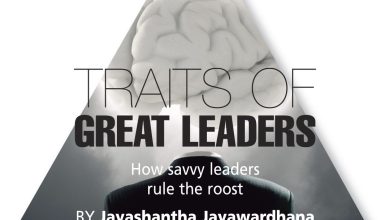MARKETING STRATEGY

A GAME PLAN FOR INNOVATORS
Being heard above the marketplace cacophony
BY Jayashantha Jayawardhana
 Persuading consumers to embrace innovation is tough; and it will become tougher with each passing day. As more markets assume the characteristics of networks, once reliable tools for introducing new products and services fall woefully short of how they’re expected to work.
Persuading consumers to embrace innovation is tough; and it will become tougher with each passing day. As more markets assume the characteristics of networks, once reliable tools for introducing new products and services fall woefully short of how they’re expected to work.
The efficacy of advertising, promotions and the sales force has been on the wane; and it’s proving more difficult for innovators to be heard above the cacophony of information from competing sources.
Therefore, executives need to reimagine the ways in which they introduce innovations to markets. By using game theory – a branch of applied mathematics, which studies how and why people make interdependent decisions – they can formulate new strategies for playing in today’s networked world.
By understanding how social, commercial and physical networks behave, innovators can come up with new tactics. And by reasoning back from endgames, they can change markets from hostile to friendly.
Economics scholar and corporate consultant Dr. Bhaskar Chakravorti wrote in the Harvard Business Review (HBR): “Markets, by their very nature, resist new ideas and products. Despite the risks involved with developing and launching new innovations, companies love them because they drive profits, growth and shareholder value. Innovations reap such handsome rewards because they are risky.
“Markets meanwhile, kill most new products and services, and accept the rest only grudgingly,” he added.
Markets are naturally hostile to innovation because they crave equilibrium. The late Nobel Laureate in economics Prof. John Nash noted that each buyer believed he or she was making the best possible choice… and every other player was also doing the same.
Equilibrium in a market lends stability to players’ expectations, validates their choices and reinforces behaviour. When an innovation arrives in the market, it unsettles the players’ expectations and choices, and introduces an element of uncertainty in decision making.
A market’s resistance to innovation grows even stronger when players are interconnected. In a networked market, participants will switch to a new product only when they believe that others will do so too. The codependent behaviour of players makes it harder for businesses to change the status quo, unlike if each participant was acting autonomously.
When the first transcontinental railroads were laid in America in the 1860s for instance, factories and businesses that were located close to waterways didn’t immediately relocate to near railways. They did so only when they felt their customers and suppliers were making the switch.
Drawing on his extensive research into large businesses and startups that had launched innovations in the technology, communications, healthcare and consumer care markets, Chakravorti offers a four step framework for a successful ‘go-to-market campaign’ for innovations…
ENDGAME TARGET In this case, you should envisage the market equilibrium you want and enact only those strategies that will help create it. For example, tech giant Intel envisaged a scenario where only brand names would keep semiconductor chips from being commoditised.
Reasoning backwards, the company launched the ‘Intel Inside’ campaign to drive its brand equity and make consumers aware that its chips were at the heart of most PCs.
POWER PLAYERS To reach the desired endgame, you have to change the behaviour of many players in the market. But this is easier said than done – especially when the network comprises a large, diverse and connected group of companies and consumers.
Fortunately, a handful of power players – the network hubs – can help propagate your innovation’s benefits, thanks to their ties with other players. For them to back your innovation however, you should first create benefits for the hub. That’s how Research In Motion (RIM) got Blackberry into the market.
BUILD MOMENTUM Though you may have a better product or service than what’s in the market, you won’t be able to disrupt the status quo on your own. To build momentum, you should bring about changes in three core groups: the players that add to the innovation’s benefits, those who act as channels to adopters and the adopters themselves.
By aligning the players’ incentives to switch to the innovation, you can turn the new product into a matter of common interest.
STAY FLEXIBLE If you wish to introduce an innovation, be prepared to embrace uncertainty and remain undeterred by the vagaries of the market. With no plans set in stone, you’ll be able to move fluidly.
Ideally, you should draw up product and marketing plans that encompass a variety of situations. You should also decide when to strike first and when to bide your time when introducing innovations to the market.





